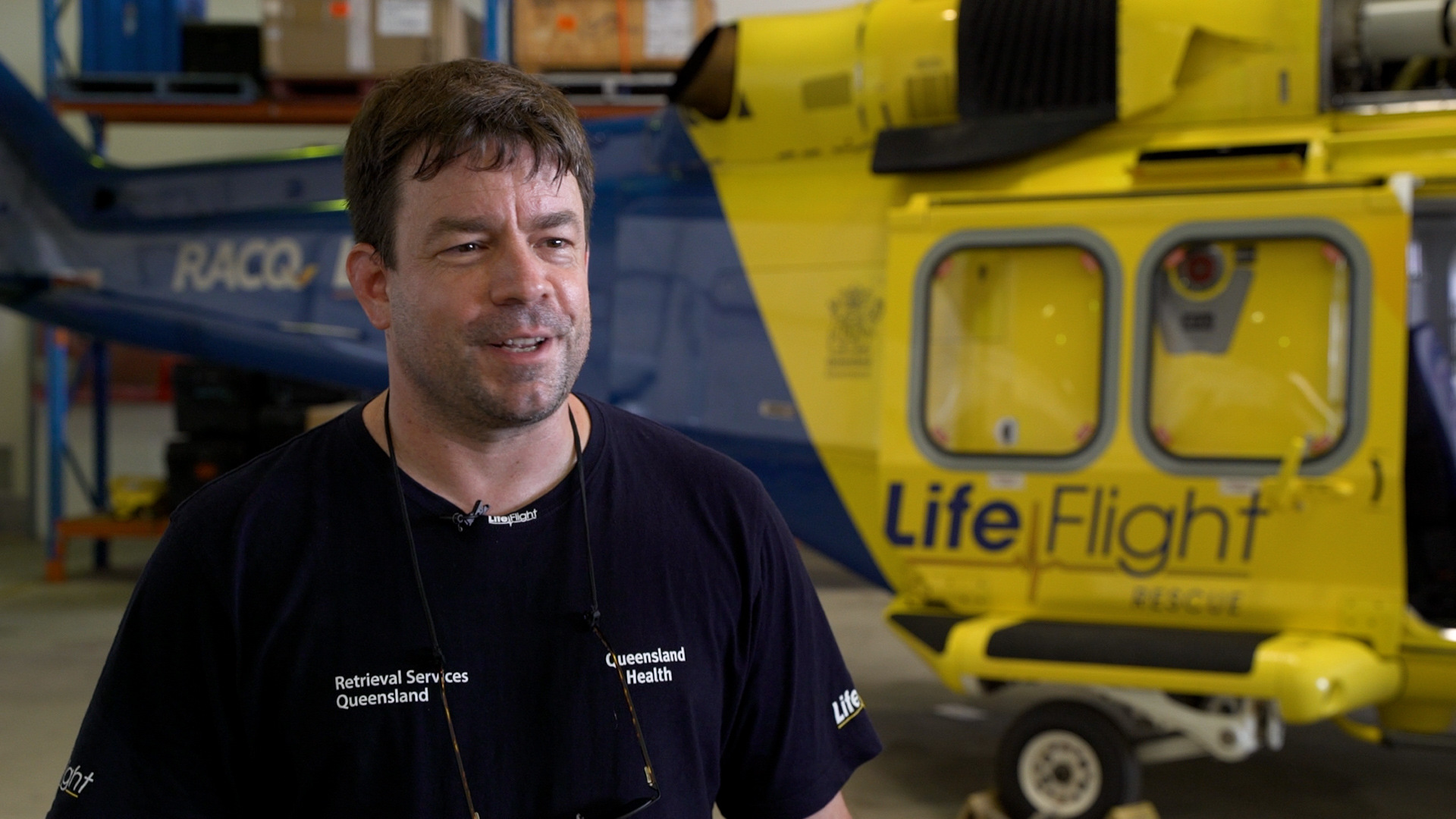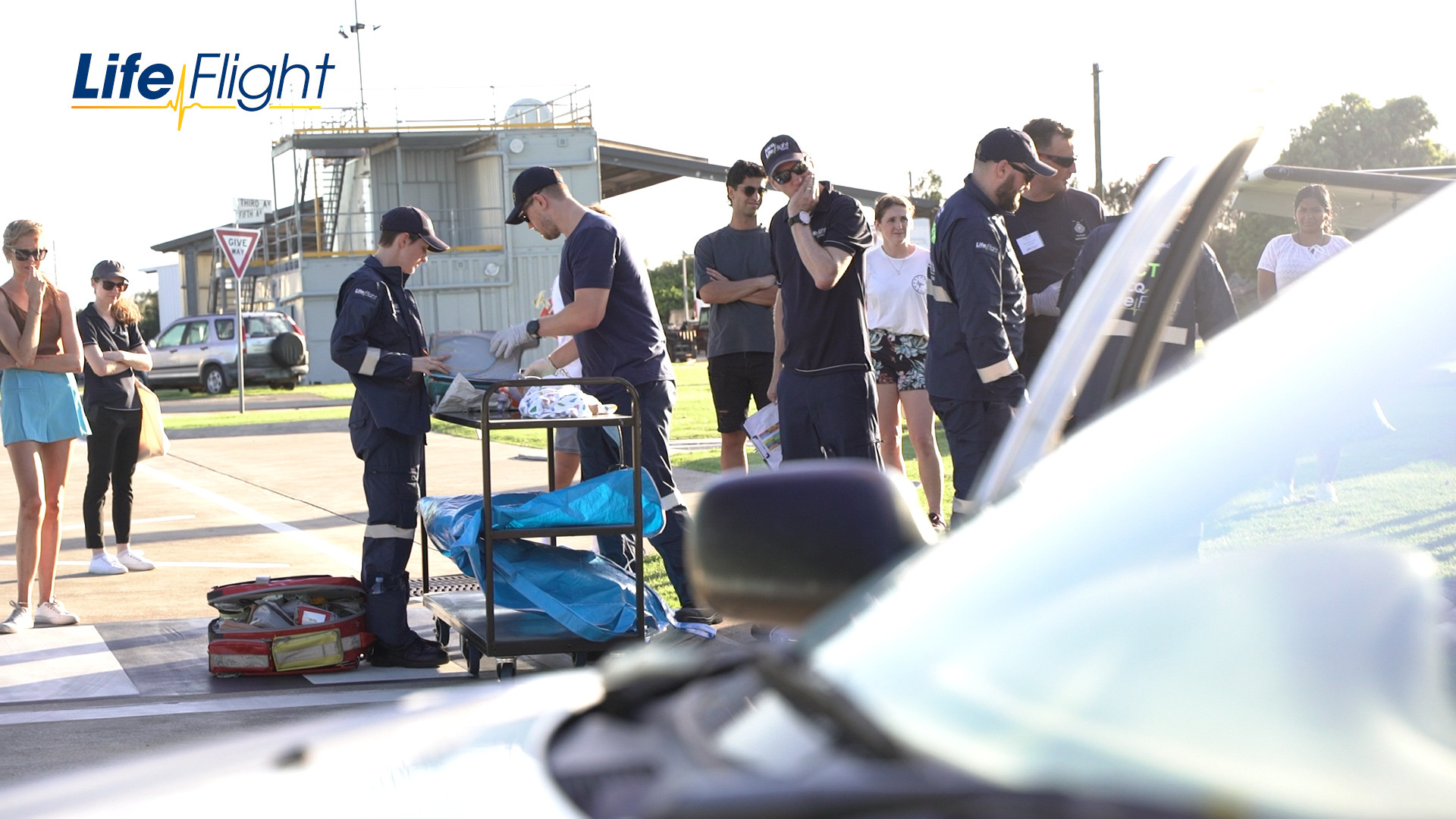RACQ LifeFlight Rescue helicopter rescue crews have created plenty of buzz over the ocean on the Sunshine Coast with a series of water-winch training exercises.
The three-day program last week was to ensure LifeFlight’s highly skilled aircrew officers and pilots are ready to respond to emergencies on the water.
A number of scenarios were being executed, including dropping a life raft from the helicopter and winching from a Coast Guard vessel to the AW 139 rescue chopper hovering above.
The exercises simulate real-life emergency situations the RACQ LifeFlight Rescue crews often face, ensuring their skills are up to date.
The training was undertaken about 2km offshore in conjunction with Coast Guard Mooloolaba.
LifeFlight chief aircrew officer Matt O’Rourke said the training was a critical component of the aeromedical service’s commitment to the community.
“There are a number of complexities and operational procedures we undertake with variables around ocean conditions, swell, vessel size and type, the condition of the patient and the equipment that might be required,” he said.
Mr O’Rourke said RACQ LifeFlight Rescue’s coastal bases at Sunshine Coast and Bundaberg were in high demand for ocean rescues, given the large volume of marine vessel activity.
Crews from the two bases have been tasked to four water winching missions this year, including winch-rescuing two people from the ocean after the boat they were in capsized, while another patient had to be winched from a cruise ship.
“There is a heavy water presence in these locations, including recreational vessels and boaties, trawlers and cruise ships. It’s a busy shipping channel and there is plenty of demand for our services,” he said.

Earlier this year 26 doctors also underwent rigorous training to be deployed to RACQ LifeFlight Rescue helicopter and Air Ambulance jet bases across Queensland, with some assigned to other aeromedical services.
The new recruits also put their pre-hospital clinical skills to the test at the Queensland Combined Emergency Services Academy at Whyte Island in Brisbane, where they participated in several high-pressure scenarios.
Each simulation was designed to mimic a real-life, worst-case scenario the doctors may be confronted with, such as a multi-casualty car crash, a house party incident involving a child and even a boating disaster.
Four of the 26 recruits will start their careers in the sky with LifeFlight on the Sunshine Coast.
Among them is Peter Brendt, who started his career as a paramedic in Germany.
He’s been flipped upside down, blindfolded and experienced a simulated crash in the middle of the night, all to prepare him as an RACQ LifeFlight Rescue retrieval registrar.
“LifeFlight is what I’ve worked for my whole life,” he said.

“I thought, this is a great opportunity for me.
“Helicopters, acute patients: it’s what I’m really looking forward to.”
Dr Brendt said the best word to describe the training was “awesome”.
“There’s winching, which is something new for me so it’s really exciting, but a little bit scary,” he said.
“I have to say that the trainers are great: I feel very well supported.”
The doctors completed a week of intensive aeromedical training at the LifeFlight Training Academy, including Helicopter Underwater Escape Training (HUET) and rescue winching.
LifeFlight HUET manager Mick Dowling said in the unlikely event a helicopter crashed into water, it was vital the new doctors had the skills required to escape to safety.
“If the occupants have been trained in HUET, they have life skills and an instinctive skillset that they can put into play to get themselves out,” he said.
“In most cases occupants will survive the impact initially.
“It’s when the aircraft is underwater, they’re getting disoriented with the water, and it’s all about giving the skills to exit the aircraft using references, so the whole time they know exactly where they are in that machine.”
With HUET under their belts, the doctors took to the sky for winch training.

LifeFlight’s fleet of four air ambulance jets and nine rotary wing aircraft operates from eight Queensland bases and is available 24 hours a day, 365 days a year, directly servicing an area of 1.85 million square kilometres.
It supports search and rescue efforts across 53 million square kilometres of land and sea for the Australian Maritime Safety Authority.
The Sunshine Coast RACQ LifeFlight Rescue helicopter crew helped 557 people in the past 12 months – representing a 31 per cent increase on the previous year.
The crew notched more than 900 hours in the air and attended a wide range of incidents, including motor vehicle accidents, airlifting patients from incidents on rural properties and search and rescues.
The majority of RACQ LifeFlight Rescue critical care doctors’ work is performed on behalf of Queensland Health, tasked by Retrieval Services Queensland, within the Queensland Ambulance Service.
Local journalists supporting local people. Help keep independent and fair Sunshine Coast news coming by subscribing to our FREE daily news feed. All it requires is your name and email at the bottom of this article.





